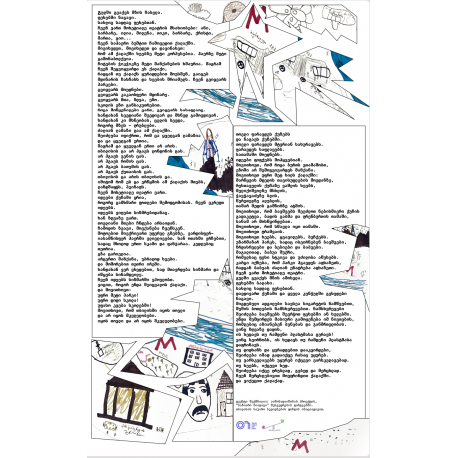 View larger
View larger

Daria Kravchuk, Giorgi Khaniashvili, Braids of Time
= More info =
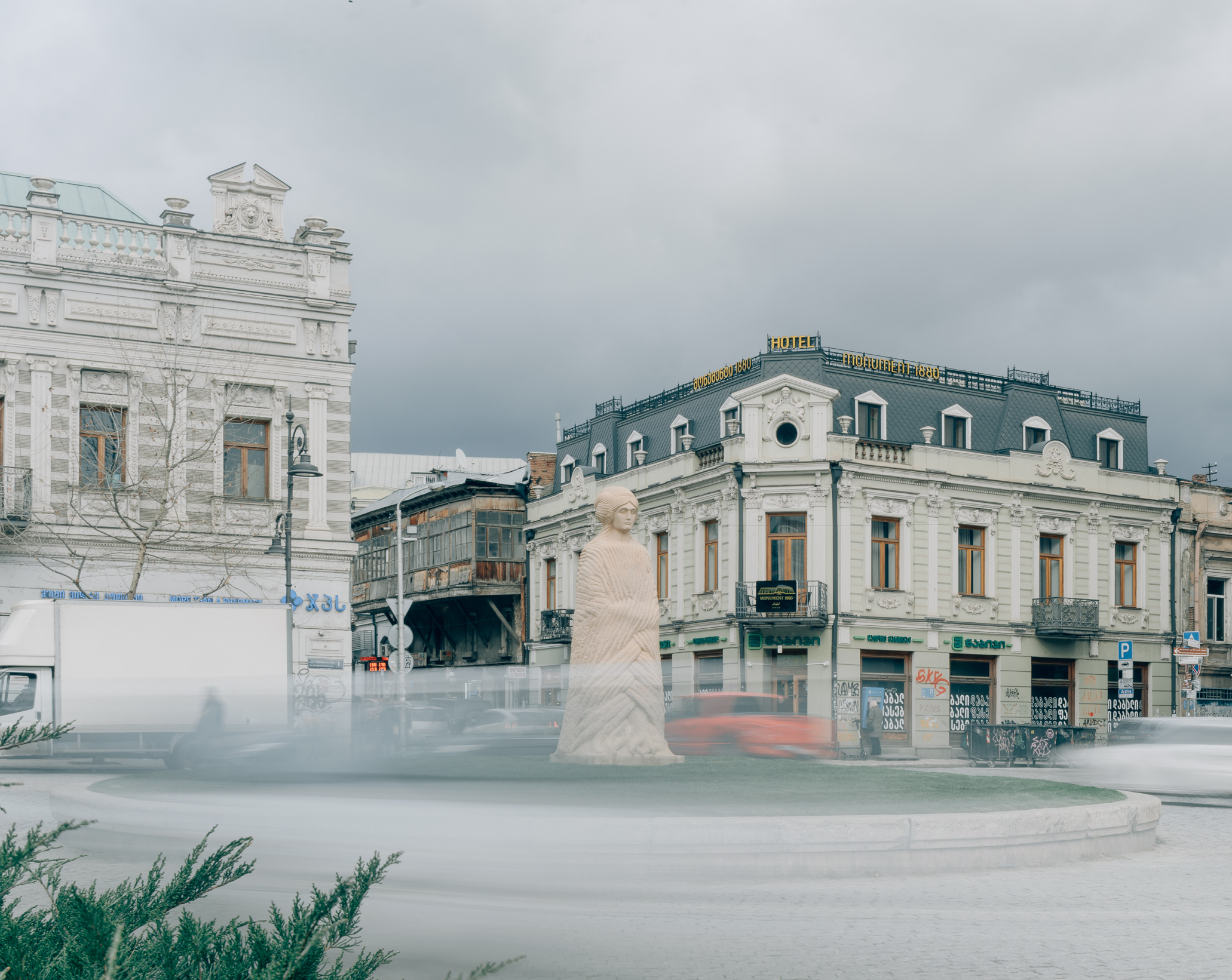
Giorgi Khaniashvili, Braids of Time, 2023, Yellow Tuff, 300 x 104 x 104 cm, Saarbruecken Square, Tbilisi, 2024
Photo: Grigory Sokolinsky
Tbilisi Public Art Fund and its project 'Braids of Time' by Giorgi Khaniashvili - the sculpture, interweaving present and past that is rooted in the local soil.
Artists in Georgia are navigating an intricate balance between tradition and modernity, confronting the nuanced challenges of post-socialist transition while examining the intricacies of spatial politics and power dynamics. Within Tbilisi's cityscapes, these tensions find expression, offering microcosms of broader societal dilemmas that mirror the diversity of cultural heritage and the complexities of contemporary urban existence. Through an exploration of urban scapes and placing works of public art within the cityscape, artists become active agents shaping the narrative of the city, prioritising community empowerment.
The transformative potential of public art projects on the urban landscape is undeniable, reshaping the city's visual identity, landmarks, and overall character. These initiatives have the capacity to revitalise overlooked or underutilised areas, transforming them into vibrant locations. Over time, such artworks become emblematic symbols of the city, influencing how residents and visitors perceive and interact with their environment. The Tbilisi Public Art Fund aligns with this ethos, aiming to redefine the city's cultural landscape by establishing new landmarks beyond the historical center and fostering dialogues.
Established in 2023 by the Tbilisi City Hall, the Tbilisi Public Art Fund is a non-commercial initiative dedicated to promoting contemporary Georgian art and enriching the city's cultural fabric. The fund provides support to Georgian artists for large-scale projects, emphasising accessibility, public engagement, and awareness of contemporary art. Via Open Calls for project proposals, the organisation ensures democratic participation within the arts community. In its inaugural year, the fund focuses primarily on projects within the city, aiming to catalyse artistic interventions in public spaces.
Lika Chkuaseli, Founding Director of the Tbilisi Public Art Fund, emphasises the inclusive nature of public art, highlighting its ability to transcend barriers of location, socioeconomic status, and cultural background. She comments: “Accessibility is central to the appeal of public art, as it eliminates barriers to experiencing creativity and culture, fostering a sense of inclusivity and belonging within the community. Ideally, we would like to support public art projects that reflect on the location and local communities and incorporate these contexts into the artworks. This connection to place and people enriches the meaning and significance of the artwork, fostering a sense of ownership and pride among residents”.
Unlike art confined to traditional gallery and museum spaces, public art projects invite broad audiences to interact and engage, facilitating dialogue and reflection. However, this accessibility also presents challenges, as artists must navigate diverse perspectives and experiences while resonating with a wide range of viewers.
The recent public artwork by Giorgi Khaniashvili, the sculpture 'Braids of Time,' exemplifies the impact of public art on urban discourse. Positioned in Tbilisi's historic Saarbrücken square, the monumental sculpture has sparked lively debate and reflection among residents and art professionals alike. 'Braids of Time' managed to prompt critical reflection on the role of art in public spaces and its potential in shaping collective memory. Despite differing opinions, the sculpture serves as a catalyst for dialogue and introspection, highlighting the enduring power of public art to provoke thought and stimulate discourse.
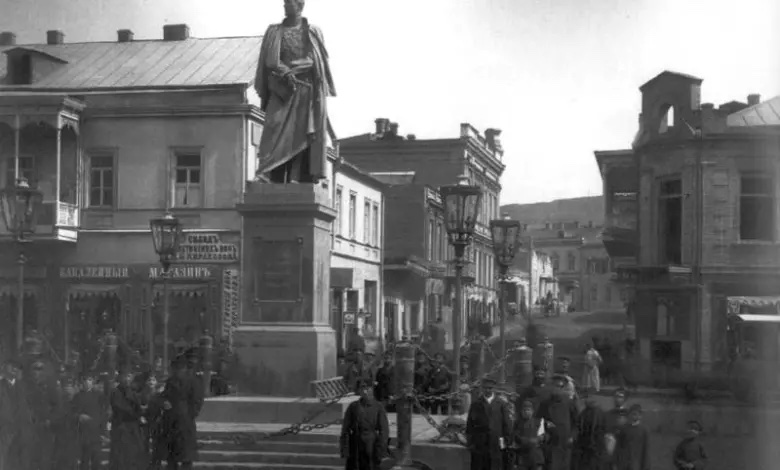
Monument to Mikhail Vorontsov was erected in Tbilisi in 1867, source: https://civil.ge/archives/513202
Irena Popiashvili, the project's curator, sheds light on the factors that likely stirred debate surrounding 'Braids of Time.' Firstly, its placement in Saarbruecken Square, historically home to a sculpture of Vorontsov atop a 3-meter pedestal dating back to 1867, has added to the discussion. Additionally, the sculpture's scale and anonymity have sparked conversation. The audience, unprepared for “the lack of information” about the sculpture’s inspiration, faced challenges interpreting the piece. Moreover, the sculpture's conservative classical style further contributed to the controversies. Popiashvili dismisses accusations of plagiarism, which some of the commentators presented: "Anyone who speaks of plagiarism in contemporary art is first and foremost totally ignorant of contemporary art."
Elene Kapanadze, Projects Manager of the Tbilisi Public Art Fund, commenting on the varied reactions to public artworks in Tbilisi, stated, "For Tbilisi, it is not uncommon to have such different and contradictory reactions to public artworks. Many of the sculptures that have become the city’s trademark were vehemently criticised upon their installation; to name a few, 'Muse' by Merab Berdzenishvili, or 'David Guramishvili' by the same artist, 'Vakhtang Gorgasali' by Eljuga Amashukeli. As an institution, we are glad to see such intense reactions to the project; it means the artwork was indeed a strong one and left almost no one indifferent."
Crafted from a single monolith of yellow tuff stone, ‘Braids of Time's’ intricately braided hair symbolises interweaved themes of history, culture, and connection to the land. Standing at three meters in height, Khaniashvili's sculpture invites one to engage with its symbolism and contemplate one's relationship to the past and present history of the place, and the evolving cityscape. Detailed planning and consultation with architects preceded the installation of 'Braids of Time,' ensuring its harmonious integration into the urban context. Utilising local materials and expertise, the project was executed within a six-month timeframe, marking the commencement of a two-year temporary installation of the piece.
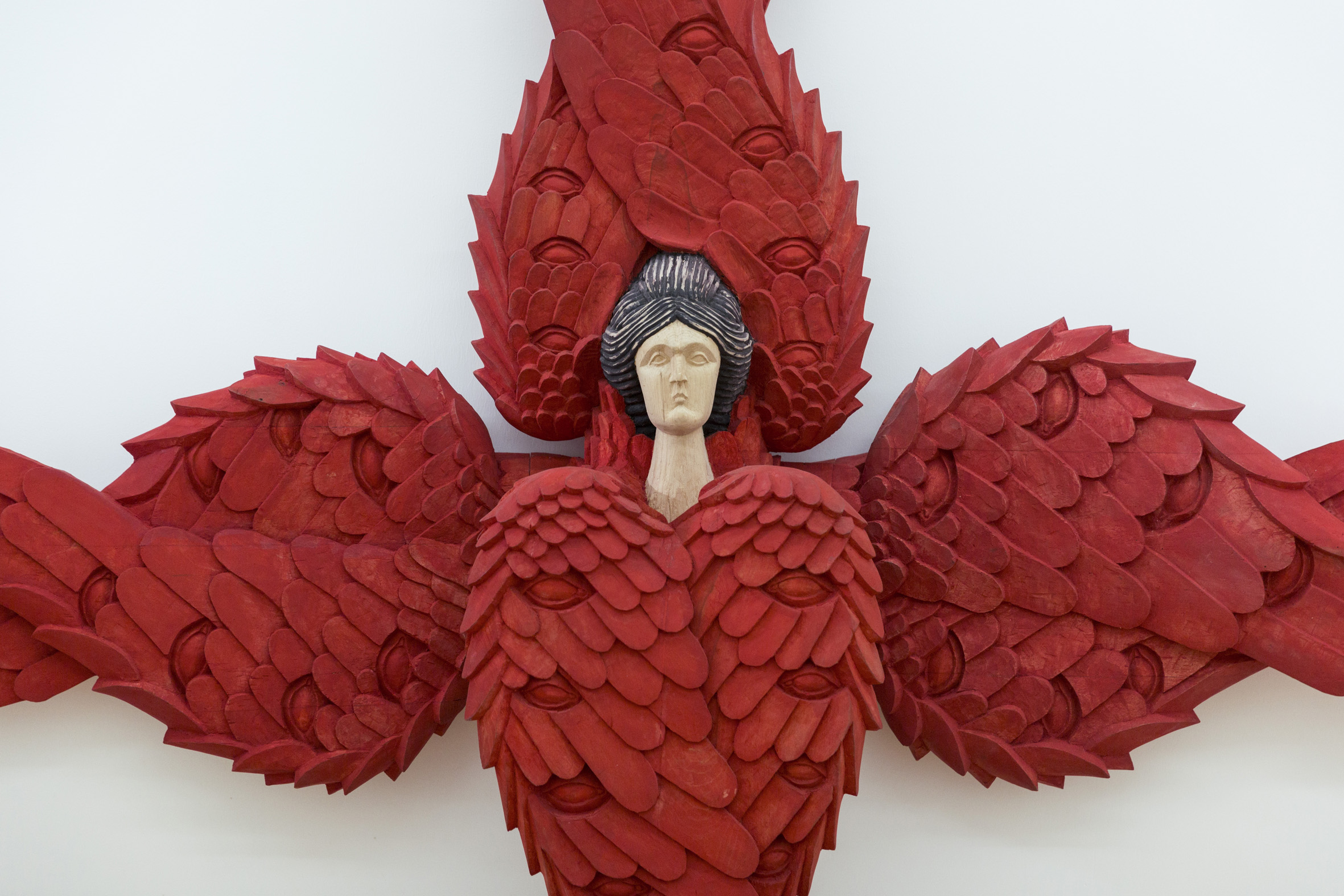
Giorgi Khaniashvili, Cherub 2, 2018, detail, birchwood, 180 x 35 x 200 cm, 'Atinati' collection
Photo: Guram Kapanadze
The unveiling of 'Braids of Time' marked a monumental shift in the artistic trajectory of Giorgi Khaniashvili. Known for his versatility in form and material, Khaniashvili, with a background in painting, has primarily focused on creating intricate three-dimensional wooden sculptures (notably his iconic piece 'Cherubim' (2018), which stands at a remarkable 180x200x30cm) and ceramic reliefs throughout his career. However, 'Braids of Time' transcends his previous works in scale and ambition. This project, supported by the Tbilisi Public Art Fund, not only showcases Khaniashvili's technical prowess and virtuosity but also underscores the fund's dedication to facilitating the realisation of artists' most aspiring visions.
The recurring motif central to Khaniashvili's body of work is encapsulated in 'Braids of Time.' Originally titled 'Roots,' the sculpture's significance lies in its representation of an ancient symbol—dating back to antiquity in Greece, later embraced and reinterpreted in Roman art and eventually incorporated into Christian iconography. This enduring symbol reflects Western ideals of beauty. The braided hair, laden with diverse symbolism, serves as a focal point of the sculpture. Its winding hair strands envelop the viewer, eventually transforming into roots that merge with the ground below. Eschewing the use of a pedestal, the artist opted for a natural integration, symbolising the seamless connection between the sculpture and its environment. From a different perspective, the braided hair resembles a staircase, imbuing the sculpture with a sense of power and elevation. Positioned within the bustling square, the serene gaze and placement of 'Braids of Time' infuse a calming presence amid the frenetic energy of urban life.
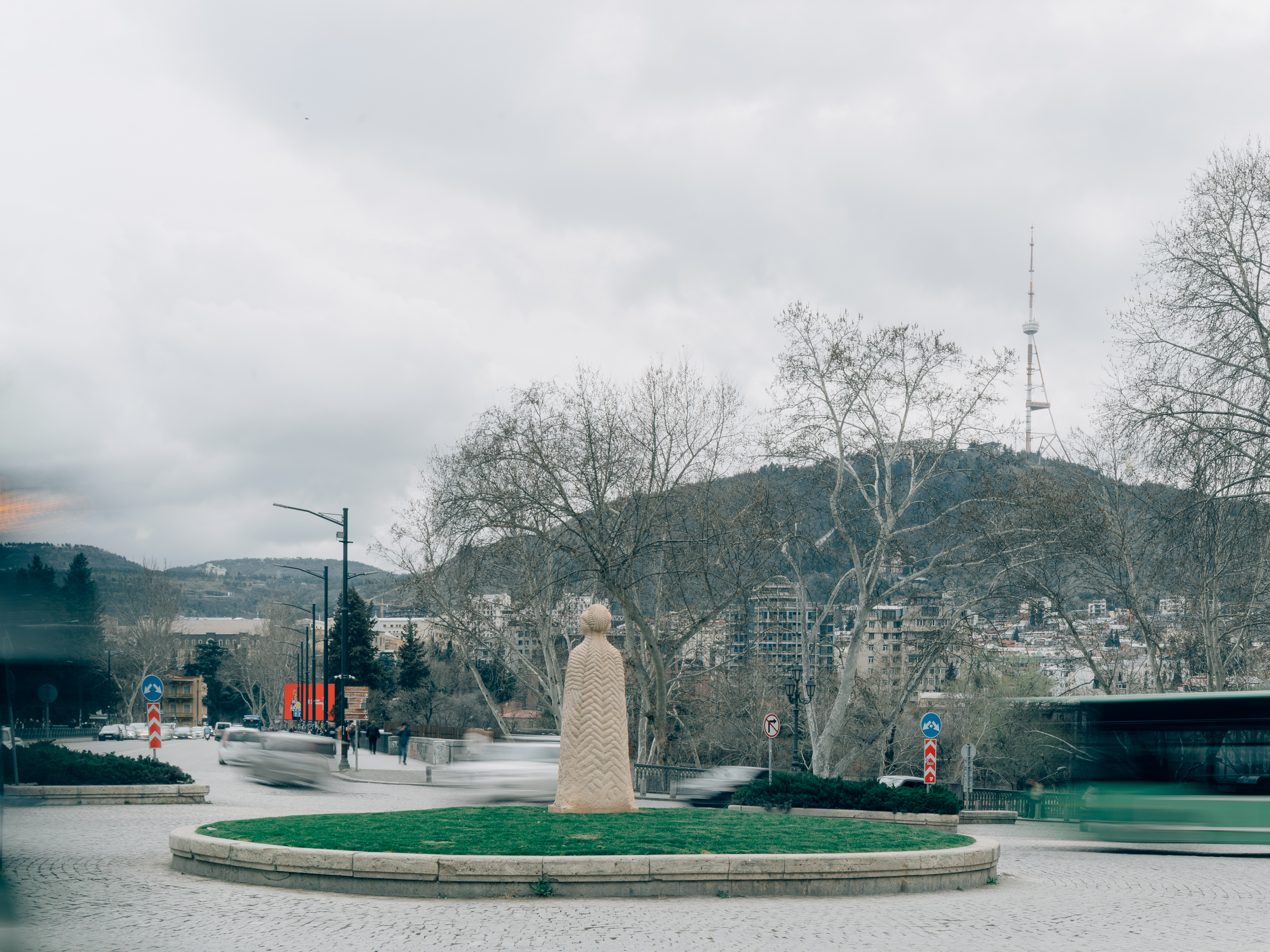
Giorgi Khaniashvili, Braids of Time, 2023, Yellow Tuff, 300 x 104 x 104 cm, Saarbruecken Square, Tbilisi, 2024
Photo: Grigory Sokolinsky
Elene Kapanadze, highlighted the deliberate consideration given to the location during the creation of Giorgi Khanashvili's sculpture, stating, “The artist was obviously aware of the location, and this work was created specifically for the site, as that is one of the conditions of our open calls. I think the inspiration for the artist was the constant movement and positive chaos around the location that he juxtaposed with a static image and a sensation of stillness that the statue exudes."
The unveiling of 'Braids of Time' sparked widespread discussion, drawing numerous individuals into the conversation and thrusting both the artist and the artwork into the spotlight. With each person interpreting the sculpture according to their own perspective, it served as a catalyst for open dialogue—the main identifier of public art's intended purpose.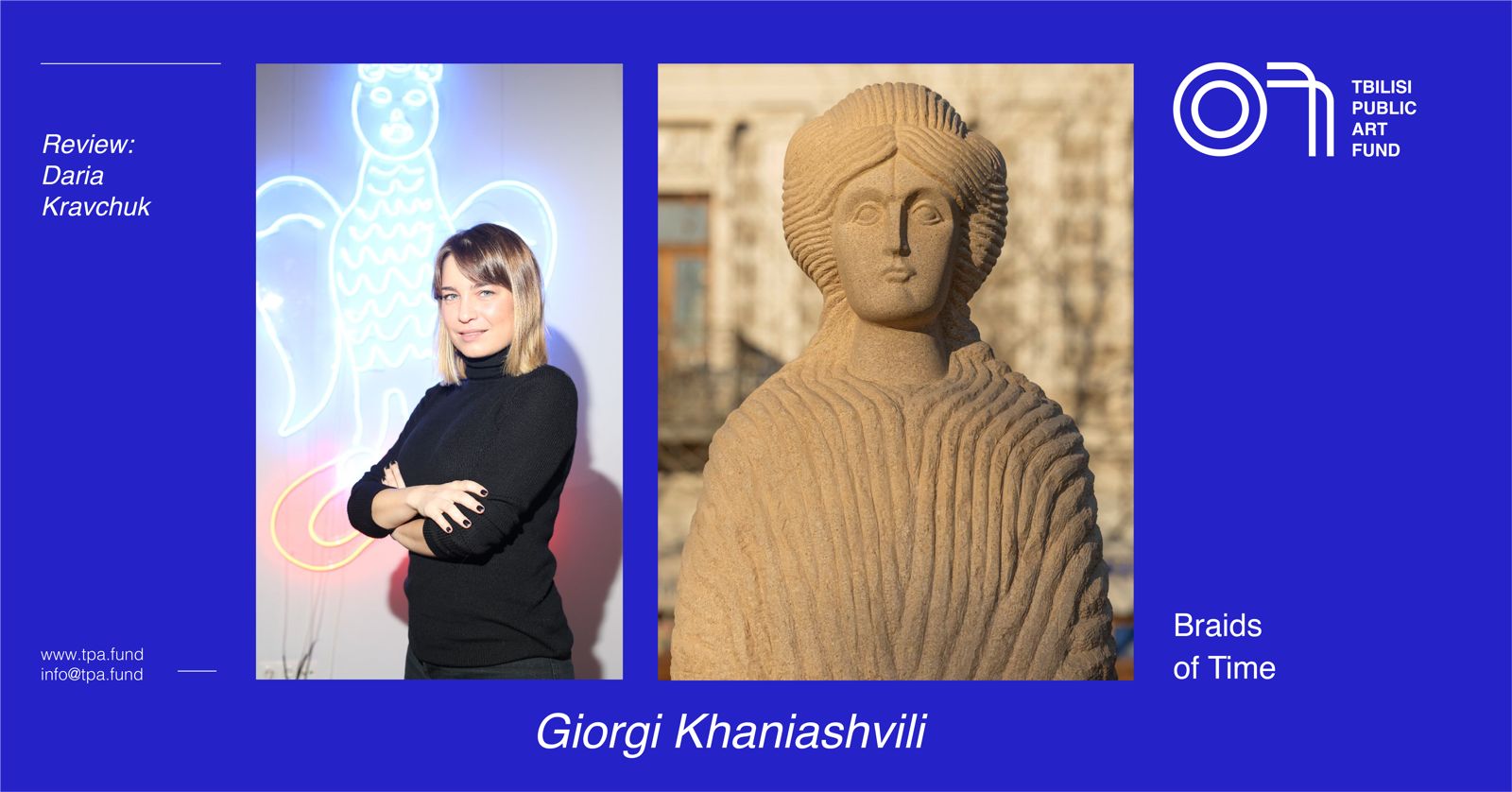
Daria Kravchuk is a Tbilisi-based curator, cultural producer, and an art journalist with over a decade's experience working globally with artists, galleries, museums, major art fairs, and private collections expanding onto brand collaborations. Her curatorial practice focuses on contemporary art, exploring projects which are contextual, socially engaging, and emphasize locality.





